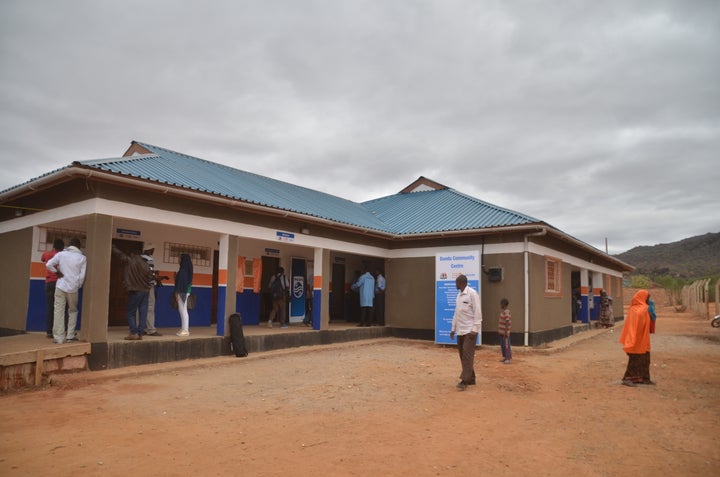This article is part of a series of interviews, “Future Tech for Good.” The interview is from WebSummit 2017 in Lisbon, Portugal, focusing on future technology for social good - #FutureTech4Good.
Healthcare technology is a buzzword that appears daily in the news. There are tracking devices, apps, telemedicine, and all sorts of other trends we hear about. At WebSummit 2017, I had a chance to sit down with Liat Ben-Zur, Senior Vice President of Digital Connected Platforms for Philips, and hear directly from her what she sees as key to the future of tech for good in healthcare. She was joined by Joost Maltha who shared insights from his time being onsite at Philips’ Community Life Centers.

A love of technology and its potential for helping people with healthcare led Liat Ben-Zur to join Philips in 2014.
We’re shifting to change how we think about healthcare from this very reactive thing that fixes you when you’re broken, to a proactive system… that can coach you to better living and to depending less on hospital systems. Our goal is to touch two billion lives by 2020... and completely shift healthcare systems as we know them. - Liat Ben-Zur, SVP Digital Connected Platforms, Philips
One of the products Ben-Zur’s team recently worked on is the first medical-grade baby development tracking app, something that has personal significance to her.
Her son was born very premature, and had to spend three months in the Newborn Intensive Care Unit (NICU). When they were able to leave the hospital, she noticed an immediate discontinuity of care. She was asked the same questions over and over by multiple specialists, and her son needed the same basic tests repeated over and over.
“I was downloading all these different apps to try to keep track of everything…when he eats, when he sleeps. No one was connecting the dots. I realized the system was broken,” Ben-Zur recalls.
This simple tool called uGrow does connect all those growth and development dots, and can spot patterns (like when baby will want to eat or nap) to help encourage routines. It even provides tips based on your stage of pregnancy or your baby’s growth stage, and can be connected to smart devices for even more specific feedback, an area expected to continue to grow.
Another group positioned to take advantage of technology in healthcare now are seniors. Even currently, using advanced analytics tools, wearable Lifeline devices can predict pending problems based on changes in a person’s gait and other small factors. Although the exact reasons are still being determined, there is a high level of predictability using algorithms that can tell if a loved one will likely need emergency services within the next 30 days, and therefore an opportunity to make additional visits, provide more support or take other proactive steps to help.
“We also have a lot of examples in emerging markets and in places like Africa and Indonesia. In some of these areas, there simply isn't healthcare. A lot of women who are pregnant die unnecessarily because they're not getting any preventative care at all during the pregnancy, or their babies die unnecessarily. So we've created solutions that are really localized for those markets, where basically people can be trained -- who are not doctors -- to go around with mobile apps and ask questions and assess, who are those high risk pregnant women? And as soon as someone is determined to be high risk there's very basic care that we can make sure that they get, ” said Ben-Zur.

Philips’ Mandera, Kenya Community Life Center brings healthcare access as well as a community center for socializing and economic growth.
“For example in Kibera [near Nairobi, Kenya],” Maltha added,”What you see there is once you have a Community Life Center, a whole lot of social activity is developing instantly. So you see shops pop up with mom and baby stuff… We typically do a lot of lighting in the surrounding area and gatherings like football for the whole community come to life. So it's much more than just a health care facility.”
From Philips Foundation: The CLC concept takes an innovative integral approach in order to tackle – all at once - the many problems existing health facilities in remote and rural areas are confronted with such as the lack access to clean water, electricity, medical equipment, health IT, and trained staff, making quality of services often low. At the same time it aims at enabling community development.
The video below provides a view into what a CLC is, including basics like:
· A solar PV system - for a reliable and clean energy supply
· Indoor and outdoor LED-lighting - enabling extended operating hours and providing security to patients and staff
· Medical devices - for improved patient monitoring, diagnosis and triage
· Laboratory equipment – for a broad range of services
· Refrigeration - for vaccines and medicines
· IT solutions - for efficient operation of the clinic, connection with the community and the rest of the healthcare system
· Water supply and purification - to prevent waterborne diseases
Some projects and products that have been successful in emerging markets have elements for use in the United States as well. Things like solar-powered medical backpacks and wind-up electrical medical devices could be used in emergency situations where there also was a lack of power, connectivity and clean water.
This "Future Tech for Good" article and the rest in the series can be found across the internet and social media using the hashtag #FutureTech4Good. And if you have thoughts, ideas, photos, or insights to share from #WebSummit2017 or about #socialgood or #nptech, please connect with me on social media! @CharityIdeas on Twitter, @amyneumann on Instagram, @CharityIdeas on Pinterest, and Amy Neumann on LinkedIn.
